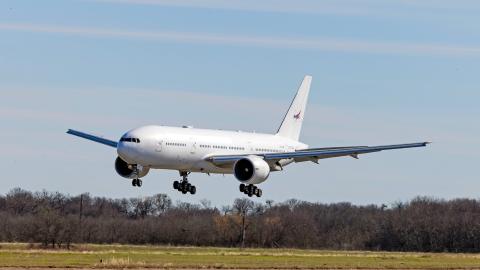
| Undergoing Modifications (ends 10/02/26) |
The NASA B777-200ER was acquired to replace and extend the capabilities of the NASA DC-8, which was retired in 2024. The National Academies of Science, Engineering, and Medicine (NASEM) 2021 report entitled "Airborne Platforms to Advance Earth System Science Priorities: Assessing the Future Need for a Large Aircraft" outlined the need to maintain and improve upon the capability to carry a variety of remote sensing and gas sampling instruments in order to answer some of the most challenging questions in earth science.
The aircraft is currently undergoing modifications to include several nadir and window ports, power, data and communications systems, and instrument operator accommodations. First operations are planned for FY2027 from NASA Langley Research Center. This unique flying laboratory will have truly global reach enabling data collection for NASA projects to include sensor development, satellite sensor calibration, data product validation, and field studies to better understand earth system processes to improve models and decision-making. The predecessor to the B777, the DC-8, demonstrated the multidisciplinary nature of this class of platforms by supporting such diverse fields as of atmospheric chemistry, archeology, biology, ecology, hydrology, meteorology, oceanography, and volcanology.
